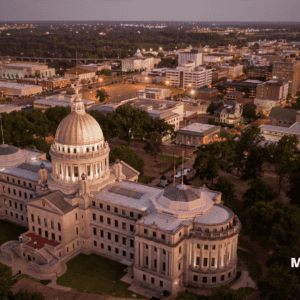The United States lost 140,000 jobs in December, the first month of jobs loss after seven months of jobs recovery from the pandemic recession. These job losses were distributed unevenly across the country, with some states continuing to grow quite well while others experienced large job declines.
Three out of five states gained jobs in December, according to the Bureau of Labor Statistics’ estimates of state jobs growth. Notably, Idaho and Utah became the first two states to recover the jobs they lost during the pandemic recession. Their gains in December were large enough to bring them past the break-even point compared to January 2020, a rapid and remarkable recovery for the high-growth Mountain West states.
With state legislatures convening across the country, jobs recovery should be a top priority for lawmakers. Not every state is seeing the same amount of jobs success, and the US economy’s jobs market is slowing and perhaps stalling long before a full recovery has been made. There remain 9.6 million fewer jobs in December compared to the beginning of the 2020, a national decline of 6.3%. While states like Idaho and Utah have already reached recovery, others like New York (-10.7%), Michigan (-11.0%) and Hawaii (-13.8%) are years away from recovery.
Majority of states advance forward in putting Americans back to work
December marks the second month in a row where states increasingly diverge between those that gain jobs and those that lose jobs. Texas once again led all states with a gain of 64,200 jobs in December, followed by Georgia (+44,700), North Carolina (+33,600) and Florida (+16,800). Job losses were driven by Michigan (-64,400), California (-52,200), Minnesota (-49,800), Pennsylvania (-37,600), and New York (-37,200).
Divergence in state jobs recovery
The race is on to see which states can make the fastest jobs recovery from the pandemic recession. Idaho and Utah crossed that finish line in December, producing a remarkable recovery from the most sudden and severe economic contraction in American history. The next four states heading for the finish line represent the territory of college athletics’ Southeastern Conference—Alabama, Mississippi, Georgia, and South Carolina. How effectively states make a rapid recovery will determine where the next generation of talent and capital will flow in search of opportunity.
On the other side of the jobs success ledger are states that took a more aggressive approach in implementing economic shutdowns and stay-at-home orders. Dozens of states appear to be several years from making a full jobs recovery. For example, 2% job growth per annum is a very robust state jobs expansion, with only high-growth states like Texas (+2.3%) beating that rate over the last decade. However, large states like Michigan (-11%), New York (-10.7%), Massachusetts (-9.3%), New Jersey (-8.3%), California (-8.2%), Pennsylvania (-8%) and Illinois (-7.2%) are several years from recovering the jobs that they lost in 2020, and many of these large states are flatlining in their jobs gains or even losing jobs again. In total, these seven large states account for 4.6 million fewer jobs at the end of 2020 compared to the beginning of 2020.
Jobs growth should be a top state priority
The national jobs recovery is stalling out after several rounds of federal aid packages. It’s time for the states to take the lead in enacting economic reforms to make themselves more competitive. State policymakers should roll back unnecessary economic restrictions and stay-at-home orders.
State policymakers should also focus on an agenda for torts, tax, and tape to get their economic recovery right. Policymakers can create lawsuit protection for small businesses, enact commonsense tax relief to catalyze growth, and make their economy more efficient and job creation more rapid by cutting through the tangle of red tape that can tie up entrepreneurs and workers.
After yet another round of federal aid, states should be able to produce balanced budgets for fiscal year 2022. States need to make longer-term adjustments for a lower economic growth trajectory. If state and local governments continue to grow at the pace anticipated before the recession, they will inadvertently become a larger portion of the economy after the recession compared to before the recession. While it is important to trim governmental expenses, states should also cultivate economic growth to create strong organic tax revenue growth.
Want more news from the states?



